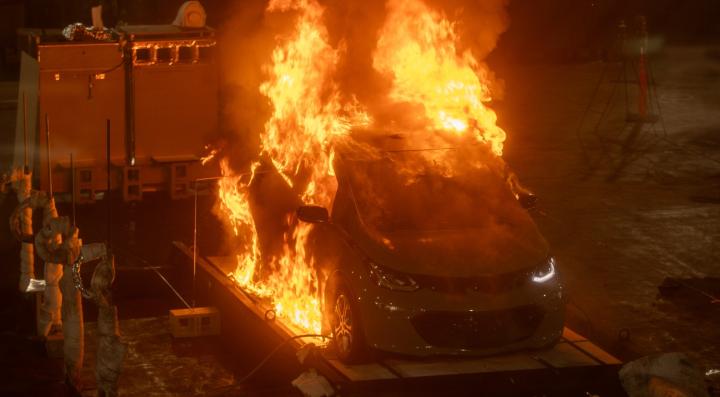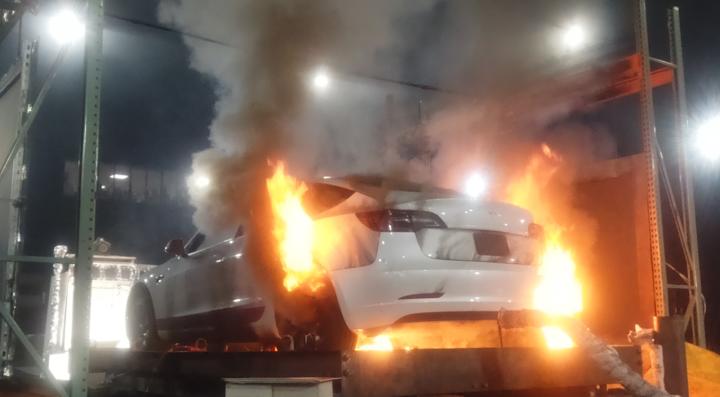
Fire Safety of Batteries and Electric Vehicles

- Overview
- Updates
- Resources
As electric vehicles (EVs) are increasingly prevalent around the world, thermal runaway and fire incidents involving these vehicles can be expected to occur with greater frequency. EV fire incidents demonstrate that there are new hazards the fire service needs to understand to improve situational awareness and inform their decision making. There is not yet sufficient data to characterize EV fire dynamics to develop efficient, effective, and safe size-up and fire control strategies. Fire service operations at EV fire incidents will benefit significantly from tactical considerations to help mitigate the potential hazards associated with EV fires and lithium-ion batteries.
In this study, the Fire Safety Research Institute (FSRI), part of UL Research Institutes conducts full-scale experiments in a laboratory setting to collect data using carefully designed and placed instrumentation. The first series of experiments seeks to understand:
- What are the burning characteristics of EVs?
- What thermal and chemical exposure risks do EVs pose to firefighters, bystanders and the built environment?
- How does the construction of an EV influence burning behavior?
The second series of full-scale experiments examines fire control strategies for managing the hazards of thermal runaway associated with EV batteries. These experiments answer the following questions:
- How can existing fire fighting equipment be used most effectively to achieve fire control?
- What suppression tactics are effective during EV fire incidents?
- How does the construction of an EV influence suppression effectiveness?
- Are different fire control strategies needed per vehicle? Per location?
“We have seen that traditional fire suppression approaches are not as effective on electric vehicle fires as they are with internal combustion engine vehicles. A better understanding of EV fire behavior will beget more effective fire fighting approaches, lest safety become an impediment to electric vehicle adoption.”
—Adam Barowy, research engineer, FSRI
Context
Because of the unique hazards of these batteries, firefighters and other first responders experience significant challenges with EV lithium-ion battery fires.



Research Objectives
Through this research, FSRI gains an improved understanding of propagation of thermal runaway associated with EV batteries. Data collected during the experiments helps to develop size-up and other tactical considerations for first responders deployed to lithium-ion battery incidents involving EVs. Research findings may also advance the next generation of EVs, battery packs, and EV-related safety standards that benefit first responder operations.
Published: April 27, 2023











